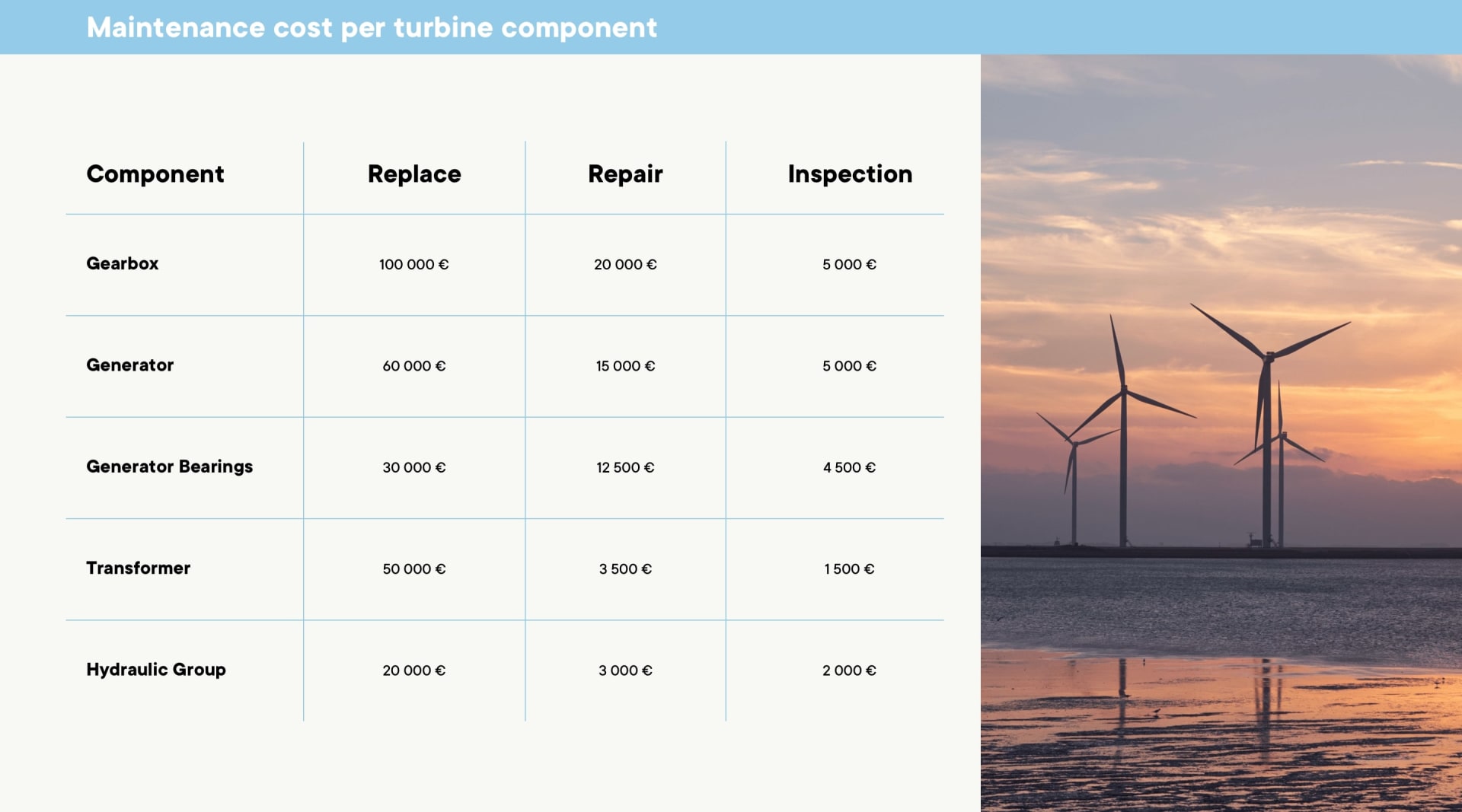The predictive maintenance software
While the machine learning engineers worked on the algorithms, Boldare’s product designer, with skills in UX and UI, worked together with a frontend developer to create a prototype of a web application that could present the results in a meaningful way for the user.
The team followed the lean startup process used at Boldare. Its main principle - ideate, build, test, learn in a constant loop - was used to build the application. Following the briefing held by the hackathon organizers, the team made an assumption that the software should mainly focus on predicting failure and simply informing the user about the forthcoming malfunction of a wind turbine.
However, after creating the first version of the prototype, the Boldare team decided to validate that idea with the target group. They leveraged the opportunity created by the Wind Europe trade show, taking place in the same building as the hackathon, and decided to show the software prototype to the target users. They spoke to several representatives from wind farm operators and found that their web application solves the problem only partially.
The target users explained that following the information about the failure they need to take several actions, such as ordering a maintenance crew to visit, checking if the parts are in the warehouse, ordering any parts that are missing, etc. They needed an integrated solution that would allow them to detect the future malfunction but also take action to prevent it from happening.
Following the feedback, the team decided to pivot and included in the application prototype a solution to address the users’ needs. The software prototype would not only predict the breakdown but also plan logistically the entire process to prevent the failure from happening, increasing the savings and cutting the downtime.
Explore the application on the clickable prototype below
Collaboration
The team followed the processes which are ingrained into the Boldare way of software development:
- they created a cross-functional team with all skills necessary to complete the job.
- throughout the entire hackathon they worked as one team, constantly communicating with each other. This allowed them to work more effectively, avoiding misunderstandings and achieving their goals quicker.
- they used the workshop to truly understand the job at hand, planning to effectively distribute the work.
- they were agile, adjusting to the changing circumstances, and delivering iteratively (the results had to be submitted to the organizers three times a day).
- they used the lean startup approach (ideate, build, test, learn), which allowed them to pivot and fulfill the end users’ needs.
- they used pair programming, which helped them solve complex problems.













